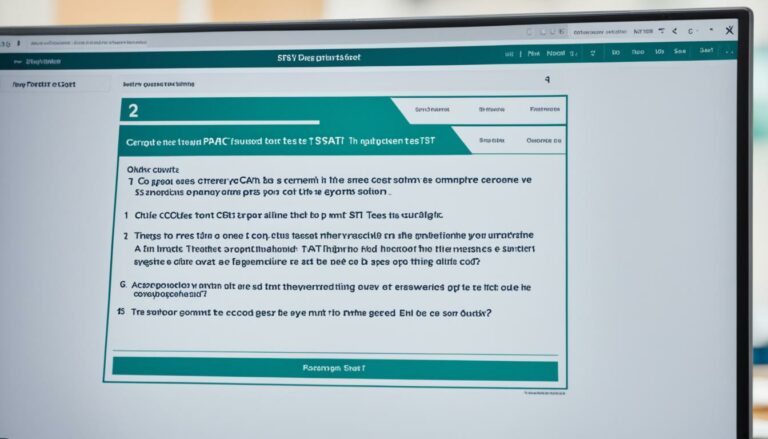How Much Money Do You Need to Study in the United States: A Comprehensive Guide
Studying in the United States is a dream for many international students. However, the cost of studying in the U.S. can be a significant barrier for some students.
The question “How much money do I need to study in the United States?” is common, and the answer depends on several factors.
During the 2021-2022 academic year, private colleges had an average tuition and fee cost of $41,411, while in-state students attending public colleges paid an average of $11,171, and out-of-state students at public universities had an average cost of $26,809.
However, this is just the tip of the iceberg regarding the cost of studying in the U.S. Additional expenses such as room and board, textbooks, transportation, and personal expenses can add up quickly.
It is essential to note that the cost of studying in the U.S. varies significantly depending on the location, type of institution, and the program of study.
Additionally, international students must demonstrate their ability to cover the cost of their education and living expenses before obtaining a student visa.
Tuition Fees: The Major Expense
In the United States, tuition fees represent the primary expense for students, and their cost varies based on factors such as the institution type, location, and chosen program of study.
In general, tuition fees for four-year universities are higher than for community colleges, and private institutions are more expensive than public ones.
Public vs. Private Institutions: A Comparative Analysis
The state and federal governments fund public institutions, which are less expensive than private institutions.
In 2022-2023, public four-year institutions’ average tuition and fees were $10,560 for in-state students and $27,020 for out-of-state students.
Private institutions, on the other hand, are not subsidized by the government, and their tuition fees are generally higher.
🌟 Hey Students! 🚀 Ready for the ultimate experience? Join us on Studentsinside.com's Facebook, YouTube, WhatsApp, and LinkedIn. Click now for tips, fun, and success vibes! 🌈✨ #StudentLife #JoinUs
In the 2022-2023 academic year, private four-year institutions had an average tuition and fee of $37,650.
In-state vs. Out-of-state tuition
In-state tuition is generally lower than out-of-state tuition, and it is offered to students who are residents of the state where the institution is located. Out-of-state tuition is provided to students, not residents of the state where the institution is located.
In-state tuition is often significantly lower than out-of-state tuition, and students planning to study in the United States should consider this factor when choosing an institution.
Community Colleges vs. Four-year Universities
Community colleges, which provide two-year programs and vocational degrees, offer a cost-effective alternative to traditional four-year universities.
They enable students to fulfill their general education prerequisites before transferring to a four-year institution.
In the 2022-2023 academic year, community college tuition and fees stood at $3,770.
Accommodation Costs
One of international students’ most significant expenses when studying in the United States is accommodation. There are two primary options for accommodation: on-campus and off-campus living.
On-campus living usually involves dormitories shared living spaces with two or three people per room. Residents share bathrooms, toilets, and showers.
The cost of on-campus living varies depending on the university, but it is usually included in the tuition fees. However, students may need to pay extra for meal plans.
Off-campus living is another option for students who want more independence. The average apartment starts at $500 monthly in rural areas and goes up to $3,500 in built-up cities. Apartments in Manhattan can begin with a minimum of $3,500 per month.
However, students can save money by moving further out of the city center, although this may involve increased transport costs.
Below are some guidelines to help you locate housing that fits within your budget:
- Start looking early: Begin your accommodation search as soon as possible to find the best deals.
- Share an apartment: Sharing an apartment with other students can help reduce costs significantly.
- Look for student housing: Some universities offer off-campus affordable student housing options.
- Consider the location: Living in a less popular area can help save money on rent.
- Negotiate rent prices: If you find an apartment that you like but is slightly out of your budget, try negotiating with the landlord for a lower price.
Living Expenses
Living expenses, influenced by location and personal choices, encompass key categories such as food, transportation, health insurance, and miscellaneous costs.
Food and Dining
Eating on campus can be convenient, but it can also be expensive. Students who want to save money can choose to cook at home instead.
This can be done by buying groceries and cooking meals in the dorm or apartment. Students can also consider meal plans offered by the university, which can provide a fixed number of meals per week or semester.
Transportation
Getting around can cost students money. If you use public buses and trains, it’s usually cheaper than having your car. But if you have a car, you need to consider paying for gas insurance and keeping it in good shape.
Health Insurance
International students in the United States must have health insurance, and the average cost can fluctuate based on the state and policy type. Students can obtain insurance through their university or from a private provider.
Miscellaneous Expenses
In addition to tuition, students may incur substantial expenses for books, supplies (including notebooks, pens, and calculators), and personal items like clothing, toiletries, and entertainment. Textbooks alone can cost hundreds of dollars per semester.
Opportunities to Offset Costs
Studying in the United States can be an expensive endeavor, but several opportunities are available to international students to help offset the costs. Here are some options to consider:
Scholarships and Grants for International Students
Many schools and groups offer special scholarships for international students. These scholarships can help pay for some or all of your school costs. Some of them might also give you extra money for living expenses.
It’s essential to start looking for these scholarships early because many have application deadlines several months before the school year begins.
Some well-known scholarship programs for international students include the Hubert H. Humphrey Fellowship, the Fulbright Program, and the Rotary Peace Fellowship.
On-Campus Employment and Work-Study Programs
While enrolled in classes, international students can work on campus for a maximum of 20 hours per week and up to 40 hours per week during scheduled breaks.
On-campus job opportunities encompass roles in areas like the library, dining services, and administrative offices.
Furthermore, certain universities extend work-study programs to students with financial need. These programs offer part-time employment that assists in covering tuition, fees, and living expenses.
Internships and Co-Op Programs
Internships and co-op programs provide students real-world work experience while earning academic credit. These programs can also provide a source of income to help offset the costs of tuition and living expenses.
Many universities have partnerships with local companies and organizations to provide internship and co-op opportunities to students. Researching and applying for these programs early is essential, as they can be competitive.
Additional Costs to Consider
In addition to tuition fees, there are other costs that international students should consider when studying in the United States.
Visa Application and SEVIS Fees
You’ll need a student visa if you’re an international student coming to the United States. There’s a $160 visa application fee and a $350 SEVIS fee.
The SEVIS fee, short for Student and Exchange Visitor Information System, is paid by the government and is required for all international students.
Travel Expenses to and from the United States
International students should factor in the expenses associated with traveling to and from the United States, which can fluctuate based on airline choices and seasonal variations in airfare.
To maximize savings, it’s crucial to make early flight arrangements. Moreover, students should also account for transportation costs to and from the airport.
Initial Setup Costs: Bedding, Kitchen Supplies, etc.
When arriving in the United States, international students must purchase items for their new living space. This may include bedding, towels, kitchen supplies, and other household items. These costs can add up quickly, so it is important to budget accordingly.
Budgeting and Saving Tips
Studying in the United States can be expensive, but there are ways to manage costs and save money. Here are some budgeting and saving tips for international students:
Opening a U.S. Bank Account and Understanding Currency Exchange
Opening a U.S. bank account can help international students save money on currency exchange fees and make it easier to manage expenses.
Many banks offer accounts specifically designed for students, with lower fees and minimum balance requirements. Additionally, having a U.S. bank account can make it easier to pay bills and receive payments from scholarships or part-time jobs.
Understanding currency exchange rates is also crucial for budgeting and saving money. International students should research exchange rates and fees before transferring money between their home country and the United States.
Transferring more money at once may be more cost-effective than making frequent small transfers.
Taking Advantage of Student Discounts
Many businesses in the United States offer discounts for students with valid IDs. These discounts can apply to everything from transportation and entertainment to food and clothing. International students should research local businesses and ask about student discounts to save money on everyday expenses.
Planning and Tracking Expenses with Budgeting Tools
Planning and tracking expenses is crucial for budgeting and saving money. Many budgeting tools, both online and mobile apps, can help international students create and stick to a budget. These tools can track expenses, set spending limits, and send alerts when funds run low.
In addition to budgeting tools, international students should keep receipts and record expenses. This can help identify areas where money is being spent unnecessarily and adjust the budget accordingly.
FAQs: How Much Money Do I Need to Study in the United States?
What Is the Average Total Cost for an International Student Per Year?
According to the College Board, international students in the United States typically spend about $39,400 per year for their undergraduate studies.
This covers tuition, fees, housing, food, books, transportation, and personal expenses. However, the cost can vary depending on where and what they study.
Are There Any Hidden Fees to Be Aware Of?
International students should know additional fees that may not be included in the total cost estimate. For example, some institutions may charge extra fees for health insurance, student activities, or technology. It is essential to carefully review the breakdown of fees and ask for clarification if anything is unclear.
How Can I Reduce My Expenses While Studying in the U.S.?
There are several ways to reduce expenses while studying in the United States. Here are a few tips:
- Look for scholarships or financial aid opportunities.
- Consider living off-campus or with roommates to save on housing costs.
- Use public transportation or walk instead of owning a car.
- Consider buying used or renting textbooks instead of getting new ones.
- Cook meals at home instead of eating out.








